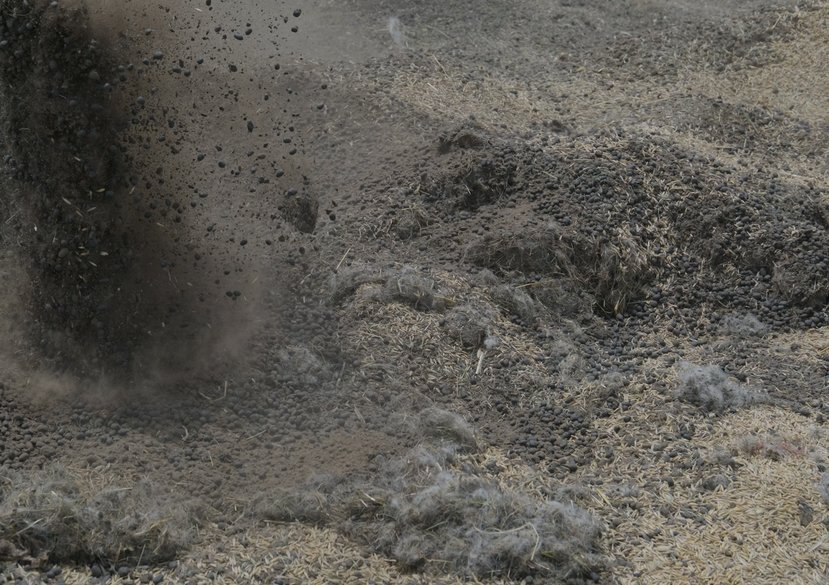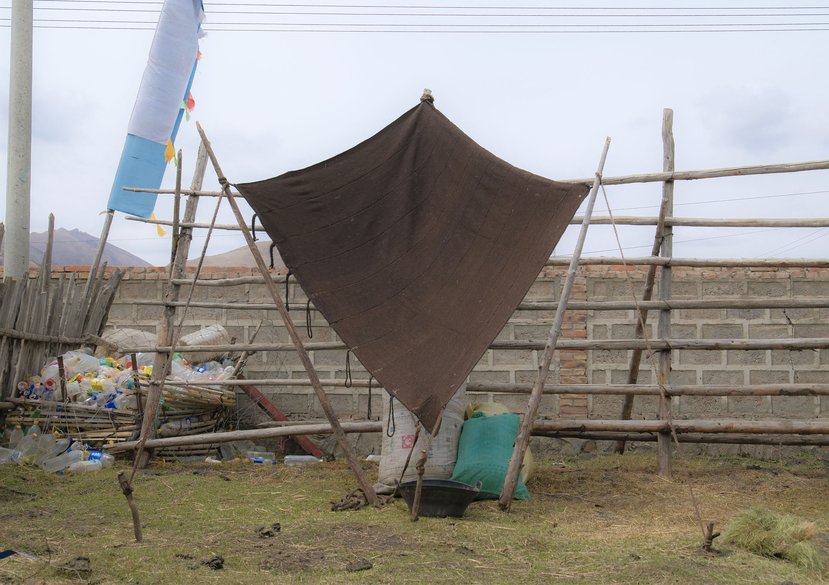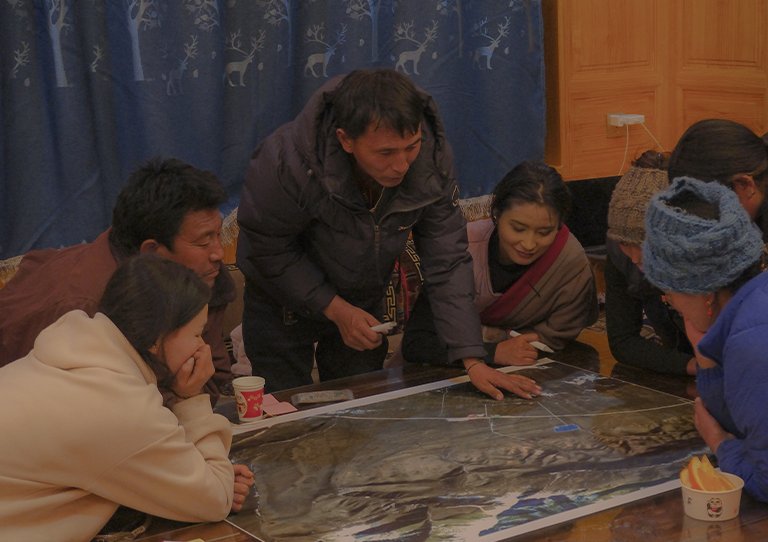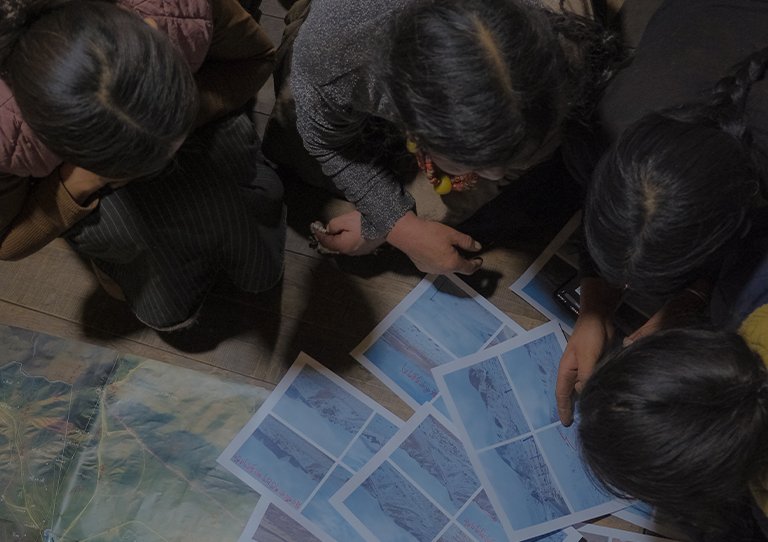
From Representation to Performative Presentation: Collective Research with the Tibetan Community for Intergenerational Knowledge Transmission in the Context of Environmental Change
This research develops ‘performative representation’ as the methodology for revitalising Tibetan knowledge and tackling land degradation at the community scale. By performative representation I mean the practice of embedding myself within the lived experiences of local Tibetans – through shared practices such as living, eating, working, and engaging in daily life. Furthermore, performative representation seeks to co-produce representations in collaboration with the community through ‘thinking-feeling’ together with local people rather than ‘speaking for’ them, developing new forms of Tibetan knowledge to face current environmental issues. This methodology enables a deeper engagement with the complex relations that constitute Tibetan life and land, positioning research as a collective, participatory process.
Performative representation focuses on land care practice, which centres on the loss of grasslands essential to current Tibetan herders’ livelihoods. The land care practice will be unpacked with socio-ecological practices, including grass seeds collecting and planting, collective and intergenerational conversations, story-telling and spatial practice around pastures, sacred landscapes, herbs, weather observation, and the care of non-human living beings (e.g., yaks and sheep). This practice not only works toward ecological restoration (e.g., grass planting and water collection) but also fosters knowledge transmission between Tibetan elders and younger generations through oral and visual communications, consolidating their own positionality towards their land and knowledge. In this way, the research will mobilise local Tibetans to relearn their homeland and situated knowledge mentally and physically, which could form solidarity within the community to deal with socio-ecological issues in their lives.
Key details
Area of expertise
Supervisors
Gallery
More about Mingxin
Biography
Mingxin Li is an activist, environmental architect, and PhD candidate working on intergenerational knowledge transmission with the Tibetan community to face socio-ecological problems collectively. Before undertaking his PhD at the Royal College of Art (RCA), he speculated on the symbiotic relationship between bacteria and stromatolites in Chile's Salar de Llamara as a way to resist lithium extraction through mapping, animation, and fiction writing (MA Environmental Architecture).
In 2025, he received the Alumni UK Climate Action Grant funded by the British Council for his participatory and community-based grass seeding actions and pedagogical sessions tackling current land degradation through Tibetan knowledge. In 2024, he received the Food Action Award (Emerging Practice) funded by CLIMAVORE x Jameel at RCA for his work on addressing the shrinkage of yak-herding wetlands in Zoige, located at the eastern edge of the Tibetan Plateau. Currently, he works as an architectural researcher with the INTERPRT studio and the G.I.T. (Territorial Research Group). His collective and individual works have been exhibited internationally, including at the Helsinki Biennial 2023, Galeria Municipal do Porto, Färgfabriken, Het Nieuwe Instituut, Design Chongqing Biennale 2022, and Tongji University.
Degrees
MA Environmental Architecture, Royal College of Art, 2020
BA Environmental Design, Jiangnan University, 2018
Exhibitions
(2024) 'ØYFJELLET: From the Frontline of Land Rights in Sápmi' (INTERPRT and CLIMATE RIGHTS). Stormen kunst/dájdda.
(2024) 'Cyclone Pam Stories' (INTERPRT). Climate Crisis and Cultural Loss. TBA21-Ocean Space & NTU ADM Gallery.
(2023) ‘Colonial Present: Counter-mapping the Truth and Reconciliation Commissions in Sápmi’ (INTERPRT). Helsinki Biennial 2023. HAM Helsinki Art Museum, Helsinki.
(2023) ‘Montanha Invertida’ (G.I.T.). Desejos Compulsivos. Galeria Municipal do Porto, Porto.
(2023) ‘The Ends of The World’ (Lithium Triangle Research Studio). Desejos Compulsivos. Galeria Municipal do Porto, Porto.
(2022) 'Towards a Symbiotic Mode of Development'. Design Chongqing Biennale 2022. Chongqing.
(2020) ‘The Ends of The World’ (Lithium Triangle Research Studio). Lithium. Het Nieuwe Instituut, Rotterdam.
(2016) 'GREEN IS CREATIVE'. Tongji University, Shanghai.
Publications
'MICRO-ORGANISMOS NO DESERTO' in Lítio-Estados de Exaustão (Eds.) Francisco Diaz, Anastasia Kubrak and Marina Otero Verzier. Dafne Editora / Galeria Municipal do Porto, 2023.
'Microorganisms in the Desert' in Lithium: States of Exhaustion (Eds.) Francisco Diaz, Anastasia Kubrak and Marina Otero Verzier. Het Nieuwe Instituut / Ediciones ARQ, 2021.




